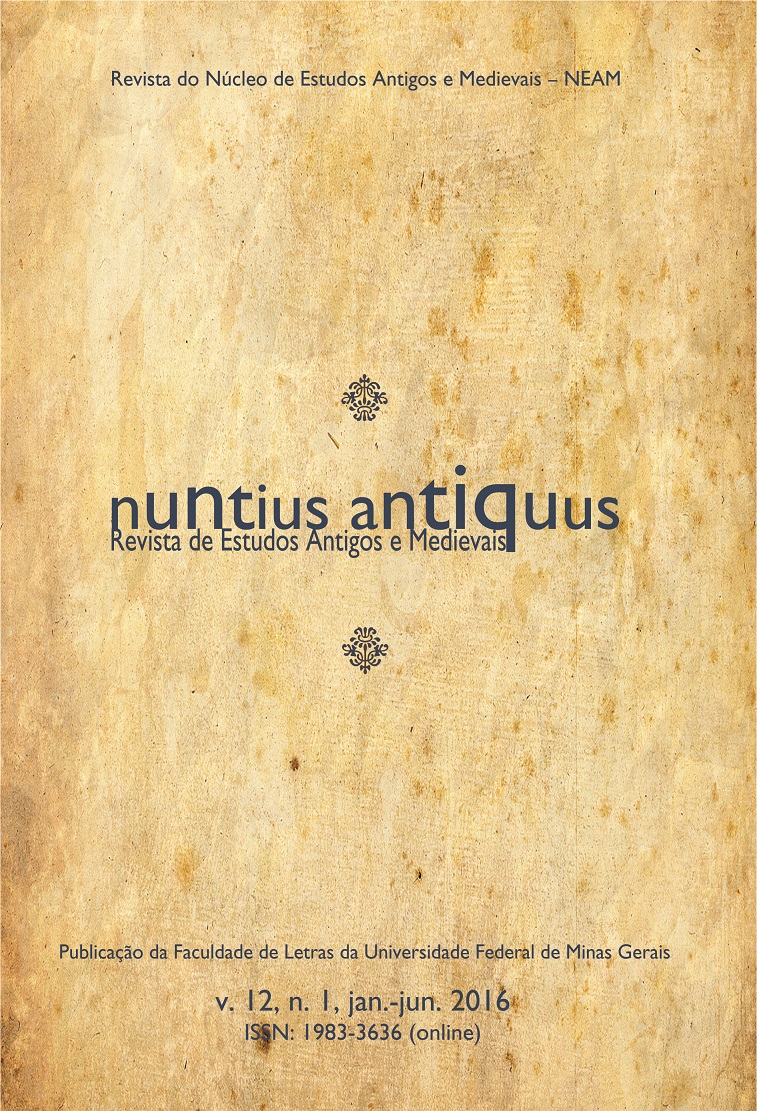Helenê kinêmatographikê; or, Is this the face that launched a thousand films?
DOI :
https://doi.org/10.17851/1983-3636.12.1.215-257Mots-clés :
Helen of Troy, film/cinema, romance, tragedy, actresses playing HelenRésumé
In ancient Greece and Rome, Helen of Troy was the most beautiful woman among mortals. Her beauty, an almost divine quality, made Helen immortal. Its praise was an integral part of Greek and Roman letters. The cinema has eagerly followed in the footsteps of classical and later authors and artists by retelling her story. Beautiful actresses have variously portrayed her as unhappy wife of Menelaus, romantic lover of Paris, and ruinous cause of the Trojan War. This paper pays homage to Helen’s beauty by presenting, in word and image, her most notable screen incarnations from 1911 to 2013.
Références
BLONDELL, R. Helen of Troy: beauty, myth, devastation. Oxford: Oxford University Press, 2013.
COELHO, M.C.M.N. A vida privada de Helena de Tróia nos loucos anos 20 em Hollywood. Clássica, São Paulo, v. 26, n. 2, p. 191-223, 2013.
ERSKINE, J. The private life of Helen of Troy. indianapolis: Bobbs Merrill, 1942.
Fabian Sweater Girl Contest Scores a Hit. Showmen’s Trade Review, v. 37 n. 8, p. 20-21, 1942.
GLÜCKLiCH, H-J. Die schöne Helena: Von Sparta über Troja nach Europa und Amerika. Göttingen: Vandenhoeck & Ruprecht, 2000.
HOMEYER, H. Die spartanische Helena und der Trojanische Krieg: Wandlungen und Wanderungen eines Sagenkreises vom Altertum bis zur Gegenwart, Palingenesia 12, Wiesbaden: Steiner, 1977.
KONSTAN, D. Beauty: the fortunes of an ancient Greek idea. Oxford: Oxford University Press, 2014.
MARLOWE, C. The complete plays. F. Romany and R. Lindsey (Ed.). London: Penguin, 2003.
RODRIGUES, N. S. Helena de Troya en el séptimo arte. Ámbitos, Córdoba, 2nd series, v. 27, p. 27-37, 2012.
SHERER, M. R. The Legends of Troy in art and literature. New York: Phaidon Press for the Metropolitan Museum of Art, 1963.
SNELL, B. Was die Alten von der schönen Helena dachten. In: HÜPPAUF, B.R.; STERNBERGER, W. (Ed.). Über Literatur und Geschichte. Frankfurt am Main: Athenäum, 1973. p. 5-22.
STANFORD, W. B. The Ulysses theme: a study in the adaptability of a traditional hero. Oxford: Blackwell, 1954.
TOLSTIKOV, V.; TREISTER, M. The gold of Troy: searching for Homer’s Fabled City. Tr. C. Sever and M. Bonnichsen. London: Thames & Hudson, 1996.
WINKLER, M. M. (Ed.). Troy: from Homer’s iliad to Hollywood epic. Oxford: Blackwell, 2006.
WINKLER, M. M. Leaves of Homeric Storytelling: Wolfgang Petersen’s Troy and Franco Rossi’s Odissea / Foglie di narrazione omerica: Troy di Wolfgang Petersen e l’Odissea di Franco Rossi. In: CAVALLINI, E. (Ed.). Omero mediatico: Aspetti della ricezione omerica nella civiltà contemporanea. 2nd ed. Bologna: D.U. Press, 2010. p. 153-177.
WINKLER, M. M. Cinema and classical texts: Apollo’s new light. Cambridge: Cambridge University Press, 2009; rpt. 2012.
WINKLER, M. M. Three queens: Helen, Penelope, and Dido in Franco Rossi’s Odissea and Eneide. In: MORCILLO, M. G.; KNIPPSCHILD, S. (Ed.). Seduction and power: antiquity in the visual and performing arts. London: Bloomsbury Academic, 2013. p. 133-153.
WINKLER, M. M. (Ed.). Return to Troy: new essays on the Hollywood epic. Leiden: Brill, 2015.
Téléchargements
Publiée
Numéro
Rubrique
Licence
(c) Copyright Martin M. Winkler 2016

Ce travail est disponible sous la licence Creative Commons Attribution 4.0 International .










